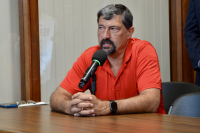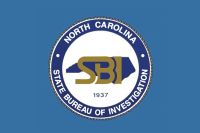Finding homes for wind towers: Balancing green energy with green forests
The National Forest Service is trying to hash out a new policy for building wind towers on public lands. The move is prompted by “increasing industry interest in development of wind energy facilities on National Forest Service lands,” according to the forest service.
The new policy will theoretically add more scrutiny for wind tower applications. Power companies would have to account for impacts to wildlife and scenery, as well as noise and light pollution in their applications. Visual impacts will supposedly be taken seriously, as will towers proposed in high-traffic bird migration routes.
The new policy would require wildlife monitoring by the power company before and after the tower is built, particularly to assess the deaths of birds and bats caught in the blades of the turbines. Power companies will have to chart changes in the presence or abundance of all wildlife due to the tower. Regular sweeps around the tower to look for carcasses will be required, and when endangered or threatened species are found, the carcasses must be turned over to wildlife agents.
The forest service has some difficult marching orders in the new policy, some of which could be considered mutually exclusive. The new policy clearly embraces wind towers as both acceptable and compatible with national forests, calling for the permitting of wind towers “to help meet the nation’s energy needs.”
But the policy stipulates that wind towers should be placed on sites where their “detrimental social and environmental impacts” will be minimized.
“In siting wind energy facilities, consider unique local factors, such as differing landscapes, habitats, wildlife or rare plant populations, and public concerns,” the policy states.
Related Items
When a wind tower is not compatible with other forest uses, the application is not an automatic no-can-do, but the forest service will attempt to “find solutions” or mitigation for the negative impacts on other users, according to Paul Johnson with the U.S. Forest Service.
Exactly how a power company could mitigate for visual impacts to ridge tops or deaths of endangered bats is not included in the policy. Giant sequoyahs and bat Viagra perhaps?









